Why India's 'Historic' Rafale Order Has Defense Experts Calling It a Game-Changer for Asian Power Balance
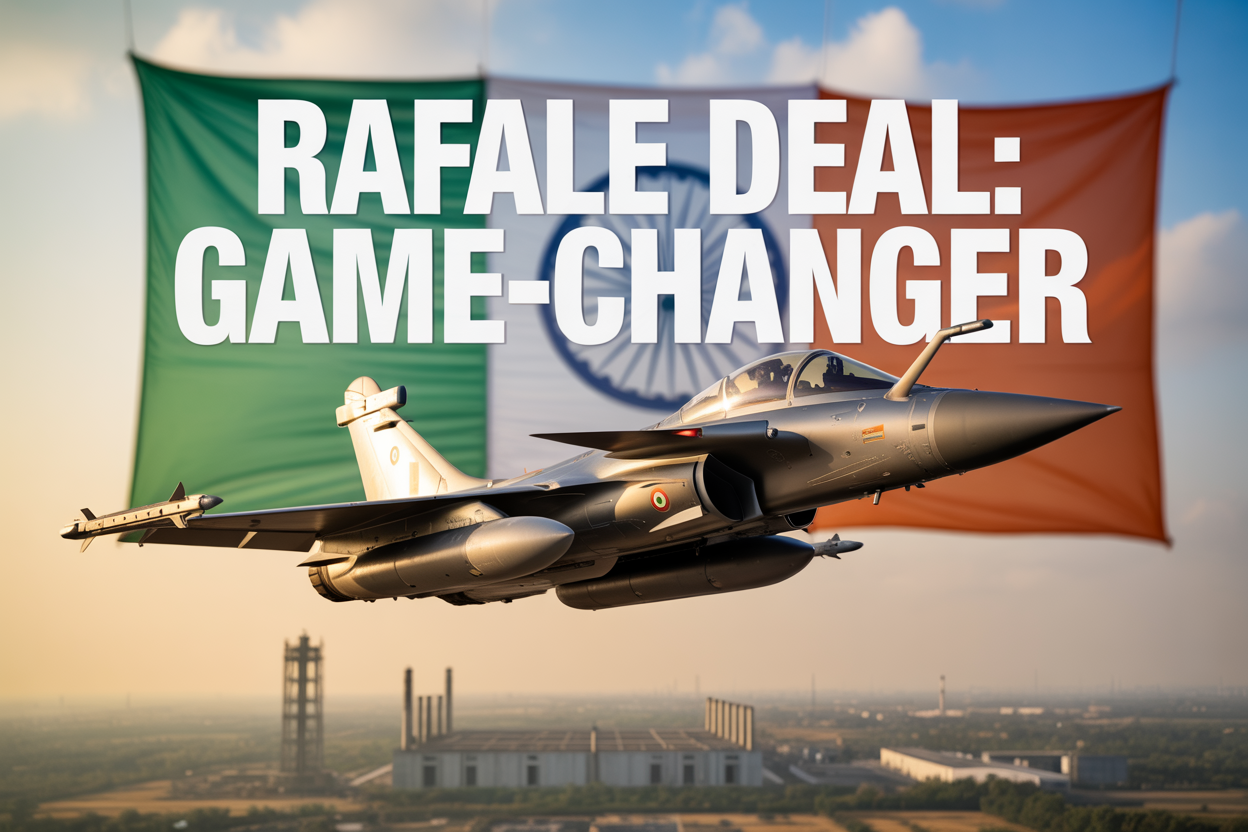
India's "Historic" Rafale Order Has Defense Experts Calling It a Game-Changer for Asian Power Balance
India just signed a deal that has defense analysts across Asia sitting up and taking notice. The country's latest Rafale jet agreement with France goes way beyond just buying fighter aircraft – it's reshaping how India builds its military strength and where it fits in the regional power game.
This breakdown is for defense enthusiasts, policy watchers, and anyone curious about how military deals can shift the balance of power across continents. We'll dig into why this Rafale order stands apart from typical arms purchases, explore how France is betting big on India as a manufacturing partner, and examine what this means for India's position against regional rivals like China and Pakistan.
You'll discover the economic ripple effects of making India a production hub for advanced fighter jets and the real challenges that could make or break this ambitious partnership.

Breaking Down the Historic Rafale Deal with Indian Air Force
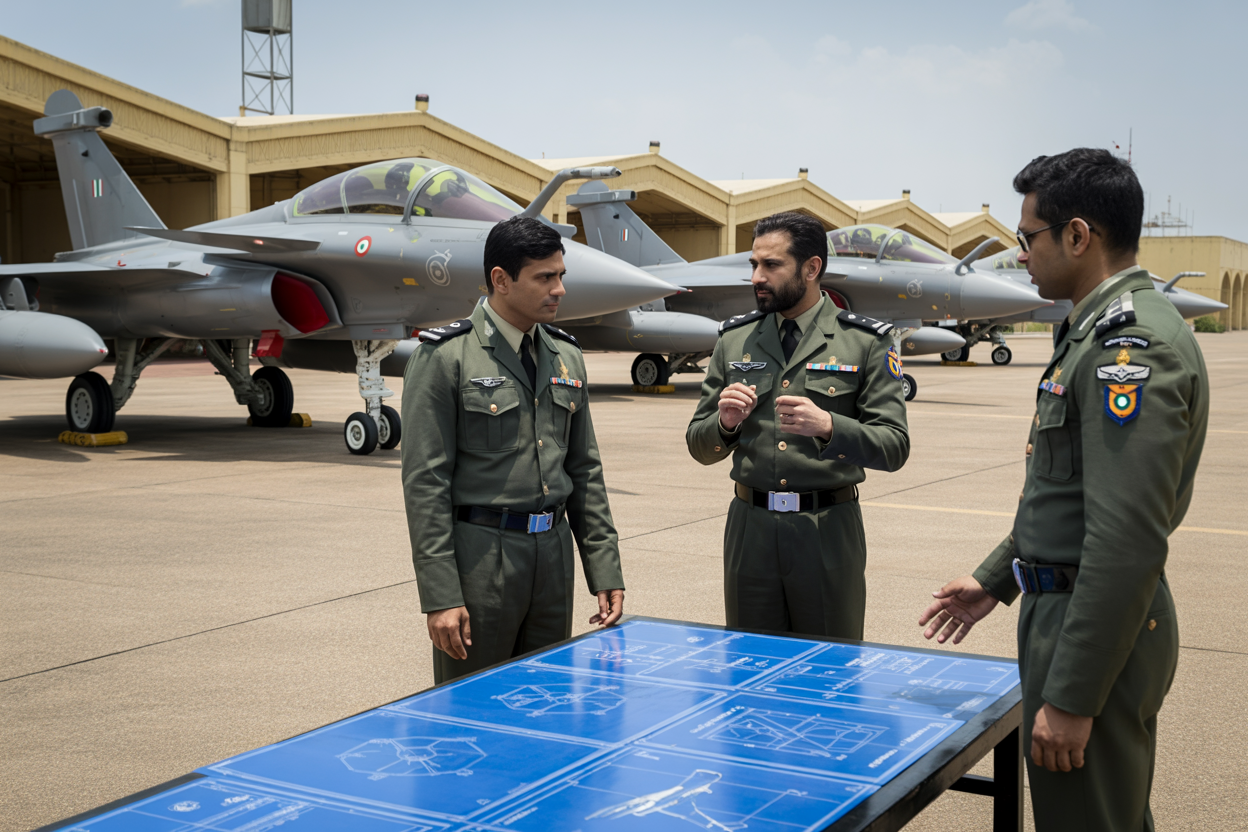
Financial Magnitude and Strategic Significance of the Contract
The Rafale jet deal represents one of India's most substantial defense investments in recent decades, with the contract valued at approximately $9.4 billion for 36 aircraft. This translates to roughly $260 million per aircraft when including the comprehensive package of weapons, training, maintenance support, and performance-based logistics. The steep price point reflects not just the advanced technology embedded in each Rafale jet, but also India's commitment to acquiring cutting-edge multi-role fighter capabilities.
Beyond the immediate financial outlay, the strategic significance extends far deeper. The acquisition addresses critical gaps in India's air defense capabilities, particularly given the aging fleet of Soviet-era aircraft and the delayed indigenous fighter programs. The Rafale jets bring advanced radar systems, electronic warfare capabilities, and precision strike options that dramatically enhance India's deterrent posture across multiple theaters of operation.
The deal also signals India's willingness to diversify its defense partnerships beyond traditional suppliers. By choosing French manufacturer Dassault Aviation over competitors from the United States and Russia, India demonstrates strategic autonomy in defense procurement while strengthening ties with a key European partner.
Number of Aircraft Ordered and Delivery Timeline
The current contract covers 36 Rafale jets, with deliveries structured across multiple phases between 2019 and 2022. The first batch of aircraft arrived at India's Ambala Air Force Station in July 2020, marking a significant milestone in the program's execution. Dassault Aviation has maintained an impressive delivery schedule, with aircraft arriving in batches of 3-4 units approximately every three months.
India's original requirement called for 126 multi-role combat aircraft, making the current 36-unit order a partial fulfillment of the Air Force's modernization needs. Defense analysts estimate that India will likely require additional orders of 80-100 Rafale jets to fully replace its aging MiG-21 and MiG-27 squadrons while maintaining operational squadron strength.
The delivery timeline incorporates comprehensive pilot training programs conducted both in France and India. Indian Air Force pilots undergo extensive conversion training on the Rafale platform, including simulator sessions and live flying exercises that ensure operational readiness upon aircraft deployment.
Comparison with Previous Defense Procurement Deals
When compared to India's defense procurement history, the Rafale deal stands out for both its speed and complexity. Unlike the prolonged negotiations that characterized previous major acquisitions, the Rafale contract moved from government-to-government agreement to signed contract within a relatively compressed timeframe of three years.
| Deal Comparison | Rafale | Su-30MKI | Mirage 2000 Upgrade |
|---|---|---|---|
| Contract Value | $9.4 billion | $12 billion | $2.4 billion |
| Aircraft Count | 36 | 272 | 51 upgrades |
| Cost per Unit | $260 million | $44 million | $47 million |
| Procurement Method | G2G | Licensed Production | Direct Purchase |
The Rafale deal's per-unit cost significantly exceeds previous acquisitions due to the inclusion of advanced weapons packages, including Meteor beyond-visual-range missiles, SCALP cruise missiles, and HAMMER precision-guided munitions. This comprehensive package approach contrasts with earlier deals where weapons and support systems were often procured separately.
Key Stakeholders and Decision-makers Involved
The Rafale procurement involved multiple high-level stakeholders across both Indian and French governments. On the Indian side, the decision-making process included the Prime Minister's Office, the Defense Ministry, the Air Force leadership, and the Cabinet Committee on Security. Air Chief Marshal B.S. Dhanoa played a pivotal role in advocating for the Rafale's operational capabilities during his tenure as Indian Air Force Chief.
French President Emmanuel Macron personally championed the deal, viewing it as a cornerstone of the strategic partnership between France and India. Dassault Aviation CEO Eric Trappier led the industrial negotiations, working closely with Indian officials to structure the contract terms and delivery schedules.
The deal also involved significant diplomatic coordination between the two nations' defense establishments. French Defense Minister Florence Parly and her Indian counterpart Rajnath Singh maintained regular dialogue to ensure smooth program execution and address any implementation challenges that arose during the contract fulfillment phase.
India's Strategic Shift Toward Domestic Defense Manufacturing
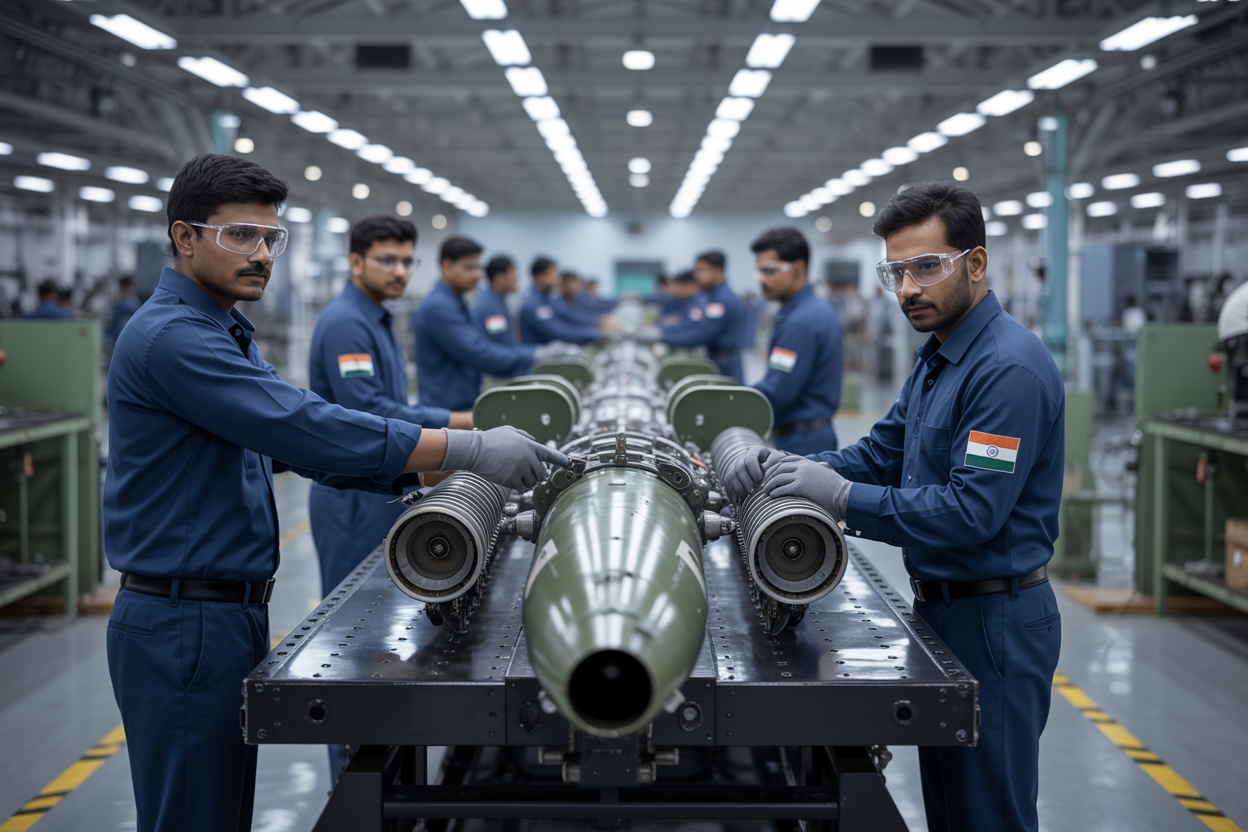
Make in India Initiative's Role in Aerospace Sector
The Make in India program has transformed how India approaches defense procurement, especially in the aerospace sector. Defense manufacturing previously relied heavily on imports, but this initiative pushed for local production of critical military equipment. The Rafale jet program represents a perfect example of this shift, where India negotiated not just for aircraft purchases but for establishing manufacturing capabilities within its borders.
This program aims to boost India's defense manufacturing sector from its current contribution of less than 2% of GDP to 5% by 2025. The aerospace component specifically targets creating a robust ecosystem where foreign companies partner with Indian firms to establish production lines. The initiative offers incentives like streamlined approvals, tax benefits, and infrastructure support to attract global defense manufacturers.
Technology Transfer Agreements and Local Partnerships
Technology transfer forms the backbone of India's defense manufacturing strategy. Under the Rafale deal, France committed to sharing critical technologies that go beyond simple assembly operations. These agreements include transfer of know-how for radar systems, electronic warfare capabilities, and advanced materials used in aircraft construction.
Indian companies like Hindustan Aeronautics Limited and private sector players have formed joint ventures with French firms to absorb these technologies. The partnerships extend beyond manufacturing to include research and development capabilities, maintenance expertise, and potential for future upgrades. This knowledge transfer creates a foundation for India to eventually develop indigenous capabilities in advanced fighter aircraft technology.
Job Creation Potential in Defense Manufacturing
The expansion of defense manufacturing through programs like the Rafale production creates significant employment opportunities across skill levels. Direct manufacturing jobs include engineers, technicians, assembly workers, and quality control specialists. The aerospace sector particularly demands highly skilled workers, driving up wages and attracting talent from other industries.
Indirect job creation multiplies these effects through the supply chain. Components, raw materials, logistics, and support services all require additional workforce. Estimates suggest each direct job in aerospace manufacturing creates 3-4 indirect jobs in related sectors. This ripple effect strengthens local economies around manufacturing hubs and creates clusters of specialized expertise.
Reducing Dependency on Foreign Imports
India currently imports approximately 70% of its defense equipment, creating vulnerabilities in supply chains and draining foreign exchange reserves. The domestic manufacturing push aims to reverse this trend by building indigenous capabilities across critical defense systems.
The Rafale program demonstrates how strategic partnerships can reduce import dependency while maintaining access to advanced technology. Instead of importing completed aircraft indefinitely, India gains the ability to produce these systems locally, export to other markets, and reduce long-term costs. This approach provides greater control over maintenance, upgrades, and operational readiness while building expertise that applies to future defense programs.
France's Investment in Indian Production Capabilities
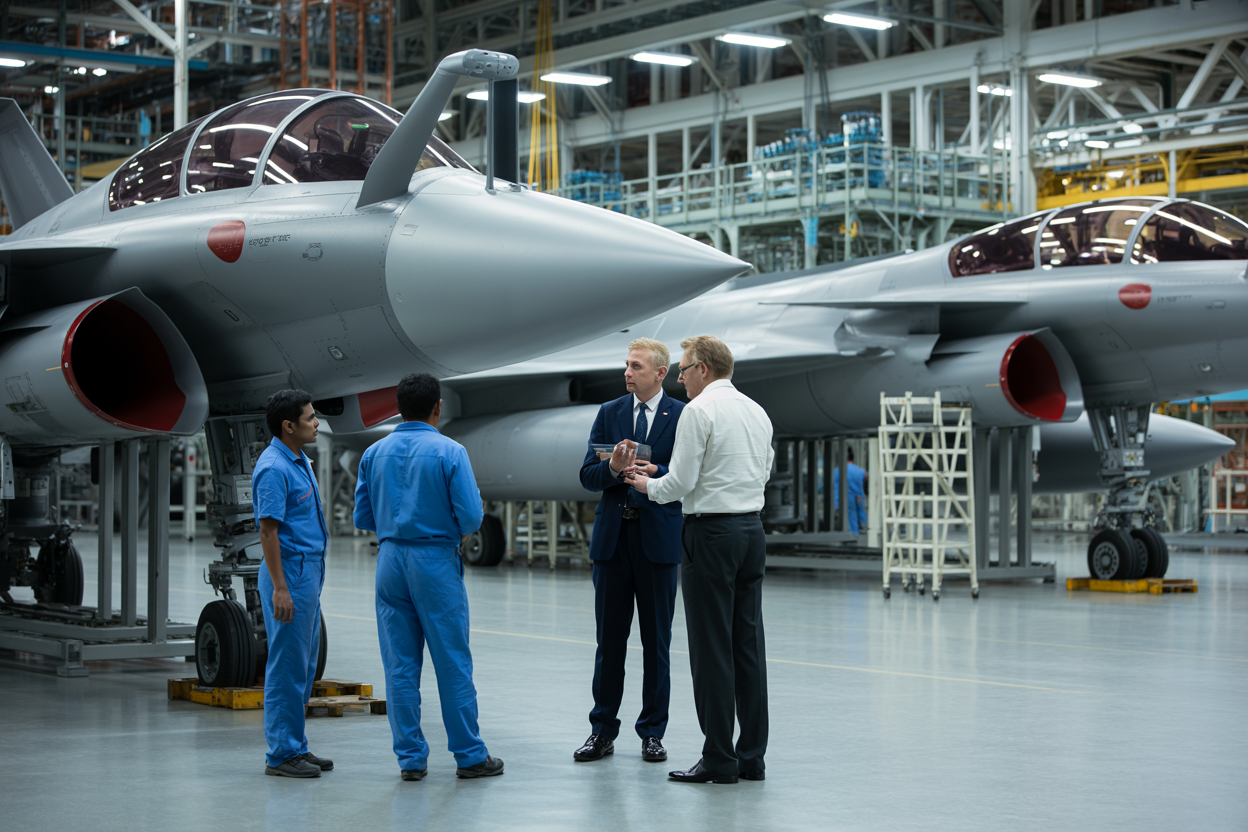
Dassault Aviation's Manufacturing Facility Expansion Plans
Dassault Aviation has committed to significantly expanding its manufacturing footprint in India, moving beyond simple assembly operations to full-scale production capabilities. The French aerospace giant plans to establish dedicated production lines specifically for the Rafale jet program, with investments exceeding $2 billion over the next decade. These facilities will focus on manufacturing critical components including airframe sections, avionics systems, and specialized composite materials.
The expansion includes setting up multiple manufacturing sites across different Indian states, creating a distributed production network. Dassault's primary facility in Nagpur will serve as the hub for final assembly operations, while satellite facilities will handle component manufacturing and testing. This decentralized approach reduces logistical bottlenecks and creates regional employment opportunities across India's industrial landscape.
Key infrastructure developments include advanced composite manufacturing units, precision machining centers, and state-of-the-art testing facilities. Dassault plans to integrate cutting-edge technologies like automated fiber placement systems and digital twin manufacturing processes, positioning these Indian facilities among the most technologically advanced aerospace production centers globally.
Local Supplier Ecosystem Development Requirements
Building a robust local supplier ecosystem represents one of the most complex aspects of France's investment strategy. Dassault Aviation must identify and develop hundreds of Indian suppliers capable of meeting stringent aerospace quality standards while maintaining cost competitiveness. The company has established strict qualification criteria covering manufacturing capabilities, quality management systems, and financial stability.
Current supplier development initiatives focus on three tiers of companies:
Tier 1 suppliers: Large Indian aerospace companies capable of manufacturing major assemblies and systems
Tier 2 suppliers: Mid-sized manufacturers specializing in specific components and sub-systems
Tier 3 suppliers: Smaller companies providing raw materials, basic components, and support services
The qualification process typically takes 18-24 months per supplier, involving extensive audits, capability assessments, and pilot production runs. Dassault has partnered with Indian industry associations and government agencies to accelerate this development process while maintaining quality standards.
Investment in supplier capabilities includes technology transfer agreements, equipment financing programs, and joint development projects. French engineers work directly with Indian suppliers to implement best practices in manufacturing processes, quality control systems, and supply chain management.
Training Programs for Indian Workforce and Engineers
France's commitment to workforce development represents a massive undertaking involving multiple educational institutions, government agencies, and private training organizations. Dassault Aviation has partnered with premier Indian technical institutions including the Indian Institutes of Technology (IITs) and National Institutes of Technology (NITs) to develop specialized aerospace engineering curricula.
The training programs span multiple skill levels and specializations:
| Program Type | Duration | Target Audience | Key Focus Areas |
|---|---|---|---|
| Advanced Engineering | 12-18 months | Graduate engineers | Systems integration, design optimization |
| Technical Specialist | 6-12 months | Experienced technicians | Manufacturing processes, quality control |
| Production Worker | 3-6 months | New hires | Assembly techniques, safety protocols |
| Management Training | 9-12 months | Mid-level managers | Project management, lean manufacturing |
Over 5,000 Indian professionals will receive specialized training in France during the initial phase, working directly with Dassault's experienced teams. These trained professionals return to India as core team leaders, cascading knowledge throughout the organization.
The program includes establishing dedicated training centers in India equipped with actual Rafale jet components and systems. Virtual reality training modules simulate complex assembly procedures, allowing workers to practice without risking damage to expensive components. Language training programs help Indian engineers communicate effectively with French counterparts, while cultural exchange initiatives build long-term working relationships between the two countries' aerospace communities.
Economic Benefits of Establishing India as Production Hub
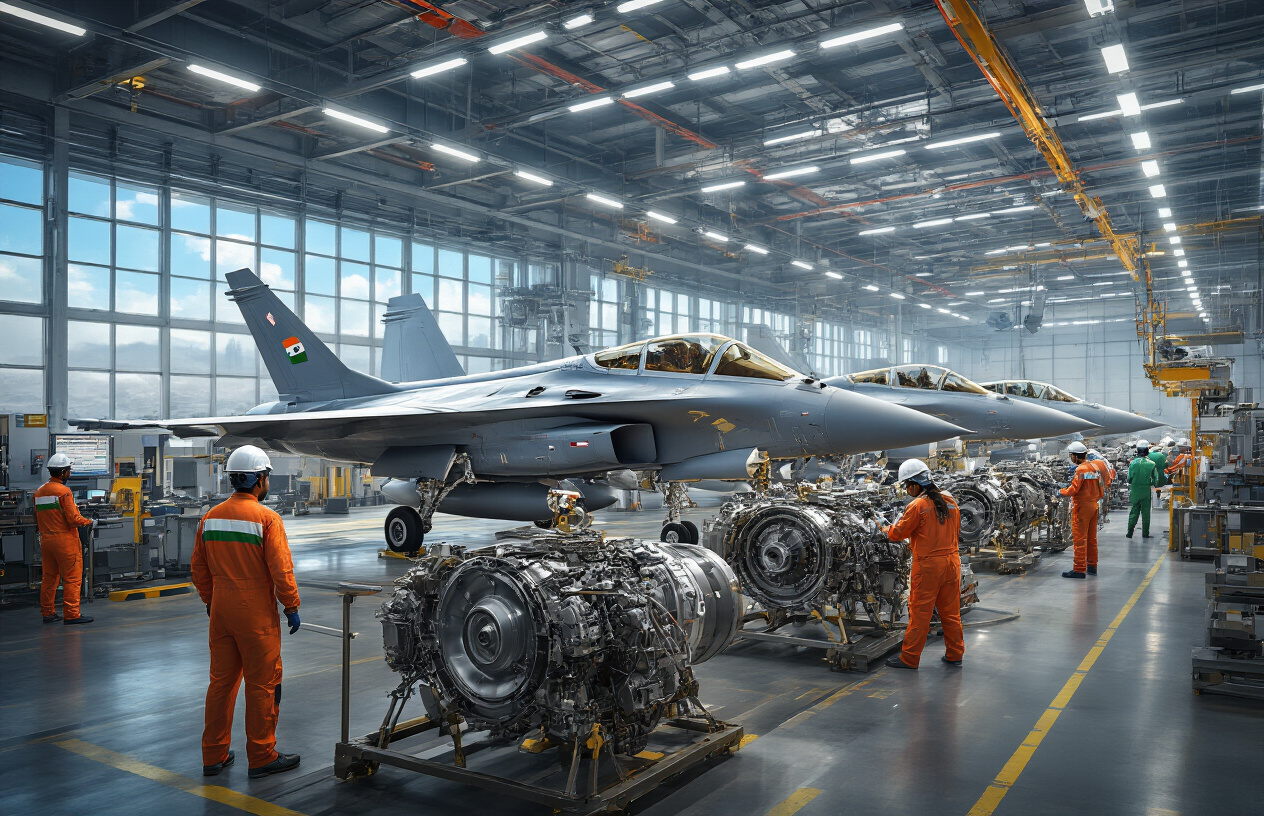
Export potential to neighboring and allied countries
India's position as a Rafale jet manufacturing hub opens massive export opportunities across South Asia, Southeast Asia, and the Middle East. Countries like Bangladesh, Sri Lanka, and Vietnam have expressed interest in upgrading their air force capabilities, and having a regional production base makes the Rafale more accessible and cost-effective for these nations. The proximity reduces logistics costs and delivery times compared to importing directly from France.
Regional allies facing security challenges see the Rafale's proven combat record as attractive. Malaysia and Indonesia, both seeking to modernize their air forces, could become key customers. The Middle East presents another lucrative market, with countries like Egypt and Qatar already operating Rafale jets and potentially interested in sustainment support from a regional hub.
India's established defense relationships and growing diplomatic influence strengthen its position as an export platform. The "Make in India" initiative combined with French technology creates a compelling value proposition for countries seeking advanced fighter capabilities without the premium European manufacturing costs.
Cost advantages through local manufacturing
Manufacturing Rafale jets domestically slashes production costs by 20-30% compared to European facilities. Lower labor costs, reduced transportation expenses, and elimination of import duties create significant savings. Raw materials sourced locally or from cost-effective Asian suppliers further reduce expenses while maintaining quality standards.
The economies of scale kick in as production volumes increase. Initial setup costs get distributed across more units, bringing down per-unit manufacturing expenses. Local suppliers develop capabilities to produce components at competitive rates, creating a robust supply chain ecosystem that supports long-term cost efficiency.
Currency fluctuation risks decrease substantially when major production occurs in rupees rather than euros. This stability allows for more predictable pricing in long-term contracts and reduces the financial volatility associated with international procurement.
Revenue generation and GDP contribution
The Rafale manufacturing program injects billions into India's economy through direct investment, job creation, and industrial development. Conservative estimates suggest the program could generate over $10 billion in economic activity over the next decade, with multiplier effects reaching various sectors.
Employment generation spans skilled engineering positions, manufacturing jobs, and support services. The program creates approximately 15,000 direct jobs and supports another 30,000 indirect positions across the supply chain. These high-value jobs contribute significantly to income tax revenues and consumer spending.
The defense manufacturing sector receives a substantial boost, with technology transfer enabling Indian companies to develop advanced capabilities. This knowledge spillover benefits other industries, creating innovation clusters that drive long-term economic growth and competitiveness.
Foreign exchange savings and earnings
Domestic Rafale production dramatically reduces foreign exchange outflows for defense procurement. Instead of spending billions on aircraft imports, India retains this capital within its economy while building indigenous capabilities. The program saves an estimated $3-4 billion in foreign exchange over the contract period.
Export opportunities flip the equation from spending foreign currency to earning it. Successful regional sales could generate substantial export revenues, improving India's trade balance. Even component exports to other Rafale operators worldwide create steady foreign exchange earnings.
The program reduces dependence on expensive European maintenance and support contracts. Local sustainment capabilities keep operational costs in rupees while building expertise that can be monetized through regional support services for other Rafale operators.
Challenges and Roadblocks in Implementation

Technical Expertise Gaps and Skill Development Needs
Manufacturing advanced fighter jets like the Rafale requires specialized knowledge that doesn't exist overnight. India's aerospace sector faces a significant challenge in developing the technical workforce needed to handle sophisticated systems integration, avionics manufacturing, and precision engineering that these aircraft demand.
The gap becomes particularly evident when examining the complexity of modern combat aircraft systems. Rafale jets incorporate cutting-edge radar technology, electronic warfare capabilities, and advanced flight control systems that require engineers with deep expertise in multiple disciplines. Indian manufacturers need professionals who understand not just basic aerospace engineering, but also software integration, materials science, and cybersecurity protocols.
Current skill development initiatives focus on partnerships with French aerospace companies and specialized training programs. However, scaling these efforts to meet production demands while maintaining the high standards expected for military-grade equipment presents ongoing challenges. The learning curve extends beyond individual workers to entire supply chain networks that must achieve consistency across multiple production facilities.
Quality Control Standards and Certification Processes
Meeting international defense standards while establishing local production capabilities creates complex quality assurance challenges. The Rafale program demands adherence to stringent French military specifications alongside Indian regulatory requirements, creating a dual-compliance framework that adds layers of complexity to manufacturing processes.
Certification processes for aerospace components involve extensive testing protocols, documentation requirements, and traceability systems that must satisfy both French and Indian defense authorities. Each component requires detailed quality documentation, batch tracking, and performance validation that can slow initial production phases.
The challenge intensifies when considering that quality standards for military aircraft exceed those of commercial aviation. Every system must perform flawlessly under extreme conditions, from high-altitude operations to electronic warfare environments. Establishing these quality control mechanisms while training local personnel to implement them consistently across different production sites requires significant time and resource investment.
Supply Chain Complexities and Component Sourcing
Building Rafale jets in India involves coordinating an intricate network of suppliers spanning multiple countries and industries. Critical components often come from specialized manufacturers in France, requiring careful logistics planning and inventory management to avoid production delays.
The supply chain complexity multiplies when considering raw materials, specialized alloys, and electronic components that must meet military specifications. Some materials require specific sourcing arrangements due to export control regulations, while others need adaptation for local manufacturing conditions and availability.
Local sourcing initiatives aim to reduce dependency on international suppliers, but developing domestic alternatives for highly specialized components takes years of development and testing. The transition period requires maintaining dual supply chains while gradually increasing local content percentages, creating additional coordination challenges and potential bottlenecks that could impact delivery schedules.
Impact on India's Defense Capabilities and Regional Power

Enhanced Air Superiority and Operational Readiness
The Rafale jet acquisition transforms India's aerial combat capabilities in ways that go far beyond simple numbers. These multi-role fighters bring cutting-edge technology that dramatically improves the Indian Air Force's ability to engage multiple targets simultaneously while maintaining superior situational awareness. The aircraft's advanced radar systems and electronic warfare capabilities create a significant technological gap between India and potential adversaries in the region.
Combat readiness receives a massive boost through the Rafale's all-weather operational capacity and reduced maintenance requirements. Unlike older platforms that need extensive ground time between missions, these fighters maintain higher availability rates, allowing India to sustain prolonged operations if needed. The integration of Meteor beyond-visual-range missiles gives Indian pilots a decisive advantage in air-to-air engagements, extending their effective combat range well beyond anything currently deployed by neighboring air forces.
Strengthened Defense Partnerships with France
The Rafale deal cements a strategic defense relationship that extends far beyond aircraft sales. France has committed to sharing critical defense technologies with India, including radar systems, avionics, and missile integration capabilities that were previously restricted to NATO allies. This technology transfer creates opportunities for joint research and development programs that benefit both nations' defense industries.
Training partnerships have expanded significantly, with Indian pilots receiving advanced tactical instruction from French air force experts. These exchanges build institutional knowledge that improves overall operational effectiveness while creating lasting professional relationships between the two military establishments. The deal also opens doors for future collaboration on next-generation fighter development and other high-tech defense projects.
Strategic Positioning in Indo-Pacific Region
The Rafale deployment reshapes power dynamics across the Indo-Pacific theater by extending India's effective operational reach. These aircraft can project force across vast oceanic distances while maintaining combat effectiveness, allowing India to play a more assertive role in regional security arrangements. The enhanced capabilities align perfectly with India's growing partnerships with the United States, Australia, and Japan through initiatives like the Quad.
Regional allies view India's upgraded air power as a stabilizing force that can help maintain the balance of power against expansionist activities. The aircraft's ability to operate from various bases across the Indian subcontinent creates multiple operational options that complicate potential adversaries' planning while reassuring partners about India's commitment to regional security.
Deterrence Factor Against Regional Threats
The psychological impact of deploying advanced Western fighters cannot be underestimated in regional security calculations. Potential adversaries must now account for significantly upgraded Indian capabilities when planning their own military strategies, creating a deterrent effect that helps maintain stability. The Rafale's precision strike capabilities against ground targets add another layer of deterrence by demonstrating India's ability to respond effectively to various threat scenarios.
Intelligence assessments suggest that the mere presence of these advanced systems has already influenced regional military planning and procurement decisions. Countries that previously felt confident in their air superiority now face the reality of fighting against some of the world's most capable combat aircraft operated by well-trained Indian pilots who understand local operating conditions better than anyone else.

India's massive Rafale deal represents more than just a fighter jet purchase – it's a bold move that reshapes the country's defense strategy and manufacturing landscape. The partnership with France goes beyond traditional buyer-seller dynamics, creating a framework for technology transfer, domestic production, and economic growth that could transform India into a major defense manufacturing hub. This shift from importing finished weapons to building advanced military systems locally shows India's commitment to self-reliance while strengthening its position in the global defense market.
The ripple effects of this deal extend far beyond India's borders, sending clear signals about changing power dynamics in Asia. As India builds its indigenous defense capabilities through this partnership, neighboring countries and global powers are taking notice of the strategic implications. The success of this ambitious project will depend on overcoming technical challenges and ensuring smooth implementation, but if executed well, it could serve as a blueprint for future defense collaborations. For India, this isn't just about acquiring better aircraft – it's about securing a stronger voice in regional security discussions and establishing itself as a key player in the Asian defense ecosystem.
